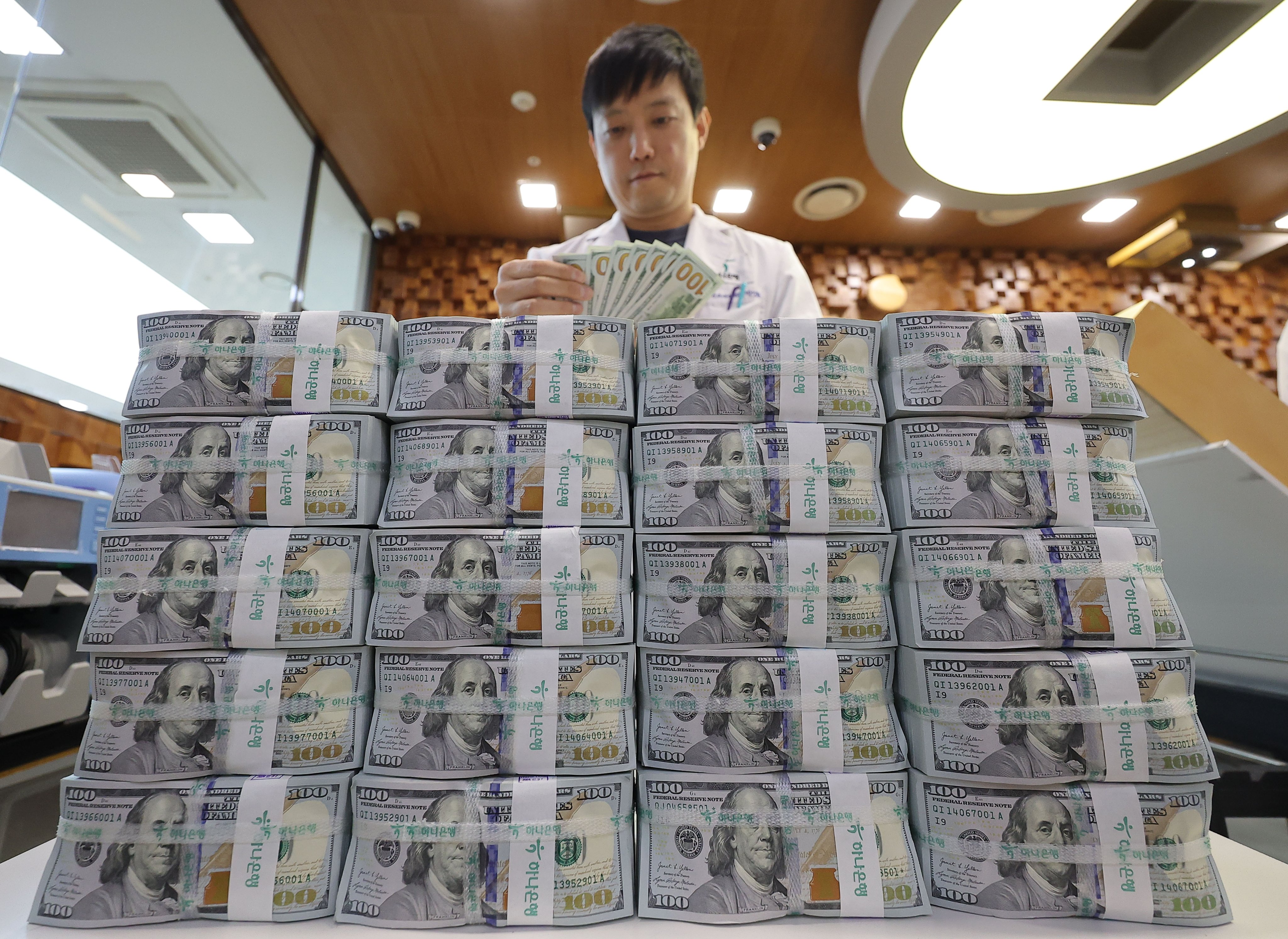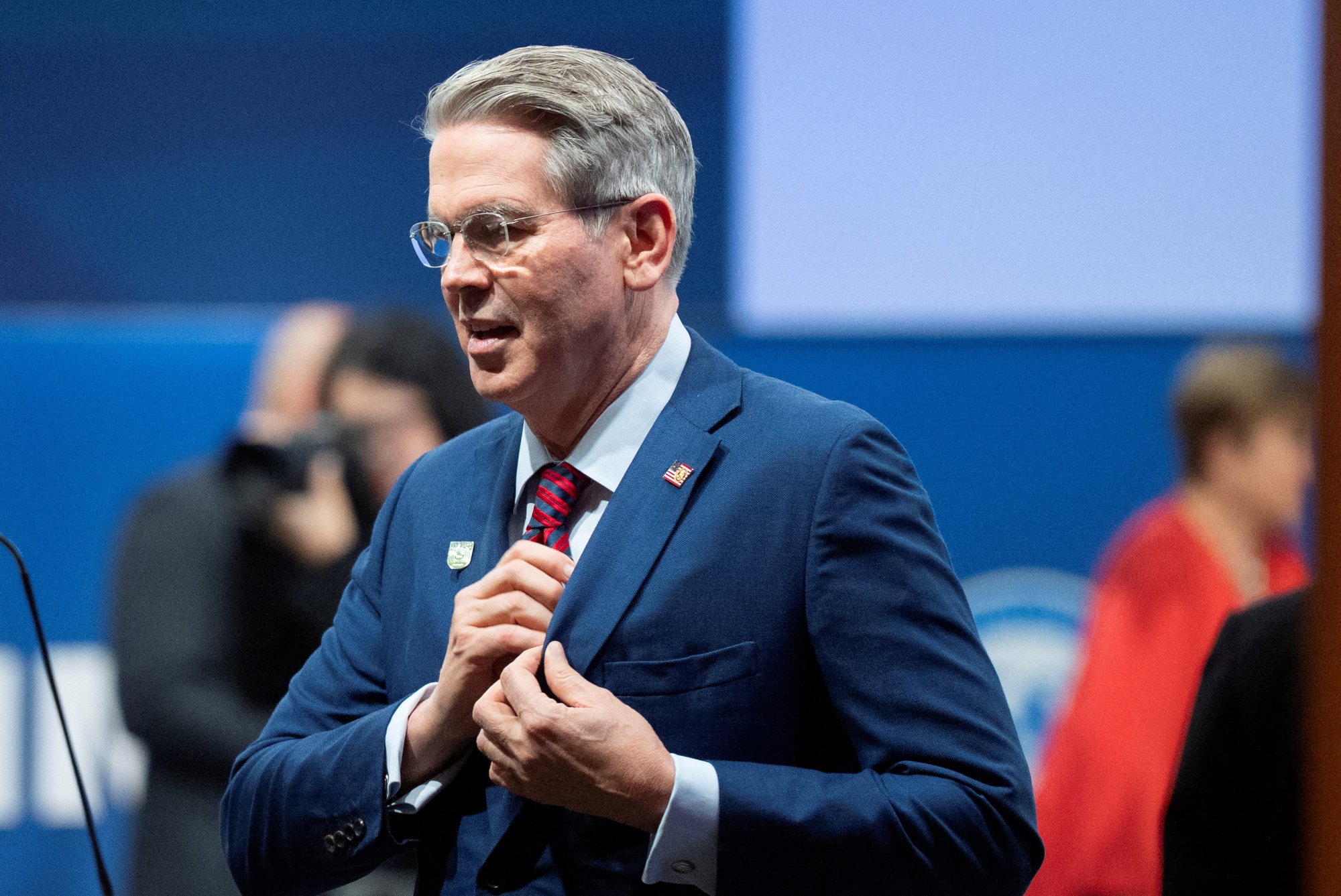Trump is trying to pull the dollar carpet from under the monetary system
There will be pain, either shared by all voluntarily through peaceful negotiation or imposed on all through force. Take your pick

After finance ministers and central bankers met at the World Bank/IMF spring meetings in Washington last month, the buzz is on the future of the dollar-anchored international monetary system.
US Treasury Secretary Scott Bessent told the gathering that, while the purpose of the Bretton Woods institutions was stability, “everywhere we look across the international economic system today, we see imbalance”.
He blamed US deficits on “an unfair trading system”. He blamed the “intentional policy choices by other countries” for hollowing out the US’ manufacturing, undermining its critical supply chains and risking its economic security. And he declared that the world’s “persistent over-reliance on the United States for demand is resulting in an evermore unbalanced global economy”.
This comes after Bessent, a former George Soros fund manager, vowed to “monetise the asset side of the US balance sheet for the American people”, following a Trump order in February to create a sovereign wealth fund.
What does the US balance sheet look like? According to the Federal Reserve, US households and non-profits ended last year with a net worth of US$169.4 trillion while the federal government had a net liability of US$24.6 trillion, including a net liability to foreigners of US$24.7 trillion.
In short, American households grew rich on the back of rising financial and real estate values, which have grown by US$43.2 trillion and US$21.3 trillion respectively since end-2017. Foreigners’ net holdings of American assets have also increased by US$17.4 trillion, reflecting the demand for US debt and equity due to the high returns.

On the other hand, net federal debt has risen by US$11.7 trillion since end-2017, reflecting the need to borrow to cover fiscal deficits. As Bessent acknowledged at the spring meetings: “We know we need to get our fiscal house in order.”
On the global balance sheet, one country’s deficit is another’s surplus. According to the Brookings Institution database, US net liability to the rest of the world was US$19.9 trillion at end-2023.
On the other side, the world’s major surplus economies include the oil and gas producers (Norway, Russia, Saudi Arabia, Qatar, the United Arab Emirates, Kuwait and Iran), China (including Hong Kong, Macau and Taiwan), the East Asian powerhouses (Japan, South Korea and Singapore), and the euro-zone economies plus Switzerland and Sweden.
These account for a net surplus of US$18.5 trillion – about 93 per cent of the US net deficit.
In effect, if America wants to reduce its net foreign liability, it must induce the surplus economies to – voluntarily or otherwise – cut their current account surpluses through exchange rate revaluation, cut their savings rate through fiscal expansion or accept export restraints like in the 1985 Plaza Accord or 1987 Louvre Accord.
Many doubt that the Trump administration is able to convene such a meeting and win agreement on what has been hopefully dubbed a “Mar-a-Lago Accord” to reduce America’s unsustainable trade and fiscal deficits. In banking, the burden of rebalancing traditionally falls to the borrower, not so much the creditor.
The inconvenient truth is the US dollar has the winner’s curse, since the more the rest of the world uses it as a reserve currency, the larger the capital inflows into dollar assets and therefore the corresponding US fiscal and trade deficits. As the dollar strengthened, US holdings for foreign assets depreciated in dollar terms, whereas the US cannot devalue away its liabilities, which are mostly dollar-denominated.
On the flip side, asking surplus countries such as the oil producers and the exporters to revalue against the dollar would cause them to suffer large foreign exchange losses.
The strengthening of the yen from around 160 to the dollar last July to around 140 now has already resulted in massive foreign exchange losses of an estimated US$323.8 billion – or around 12.5 per cent of Japanese holdings of US assets of about US$2.6 trillion as at end-June 2024. That is equivalent to 7.7 per cent of Japan’s gross domestic product last year.
In 2009, Hillary Clinton, then US secretary of state, famously mused, in reference to America’s dealings with China: “How do you deal toughly with your banker?’’ Bessent may think that since the US provides a security umbrella for its allies, they could be pressured to cough up more. But its rivals certainly won’t agree and will try to reduce their dollar exposure.
To sum up, the international monetary system is in a dollar-centred trap. The International Monetary Fund and World Bank cannot be tough on their non-US shareholders who control most of the voting power. Bessent’s call on the IMF and World Bank to be tough on the majority shareholders who are surplus economies is just as unlikely as any attempt to be tough on the US – a founding member of both institutions with veto power in the IMF thanks to its 16.49 per cent voting share.
The old golden rule is that he who has the gold, rules. The US has 8,133.5 tonnes or more than 22 per cent of the world’s official gold reserves but it also owes a growing and alarming debt to the rest of the world.
How to square this winner’s curse will be a financial engineer’s dream. But financial engineering cannot paper over a fact: 4.22 per cent of the world’s population cannot dictate to the rest of the world and must solve its debts in a democratic rule-of-law manner. There will be pain, either shared by all voluntarily through peaceful negotiation or imposed on all through force. Take your pick.